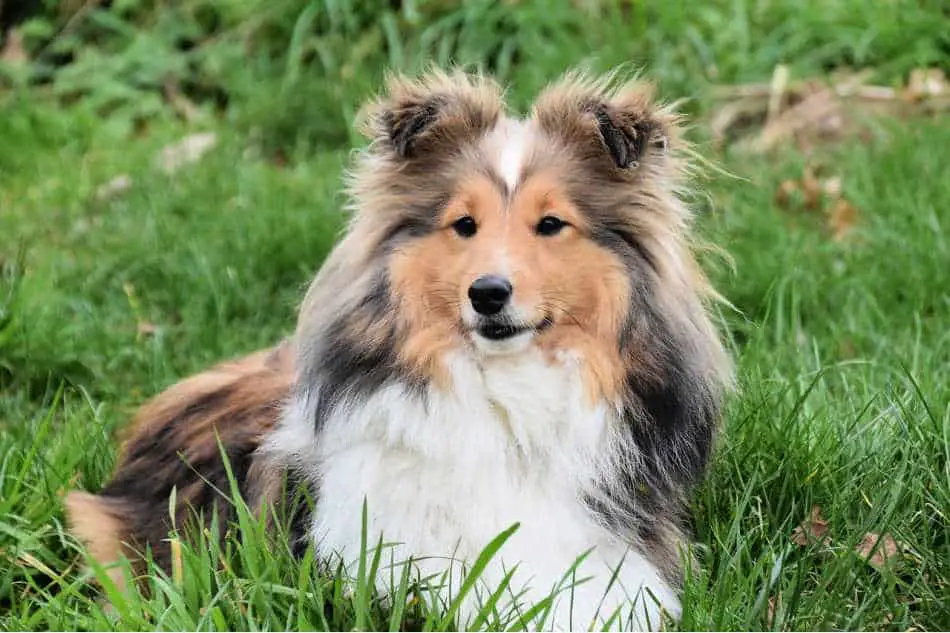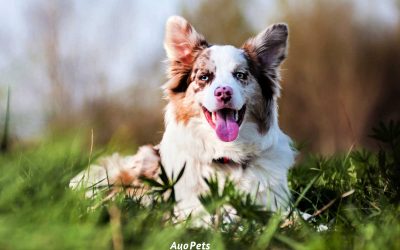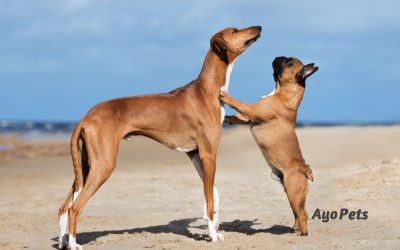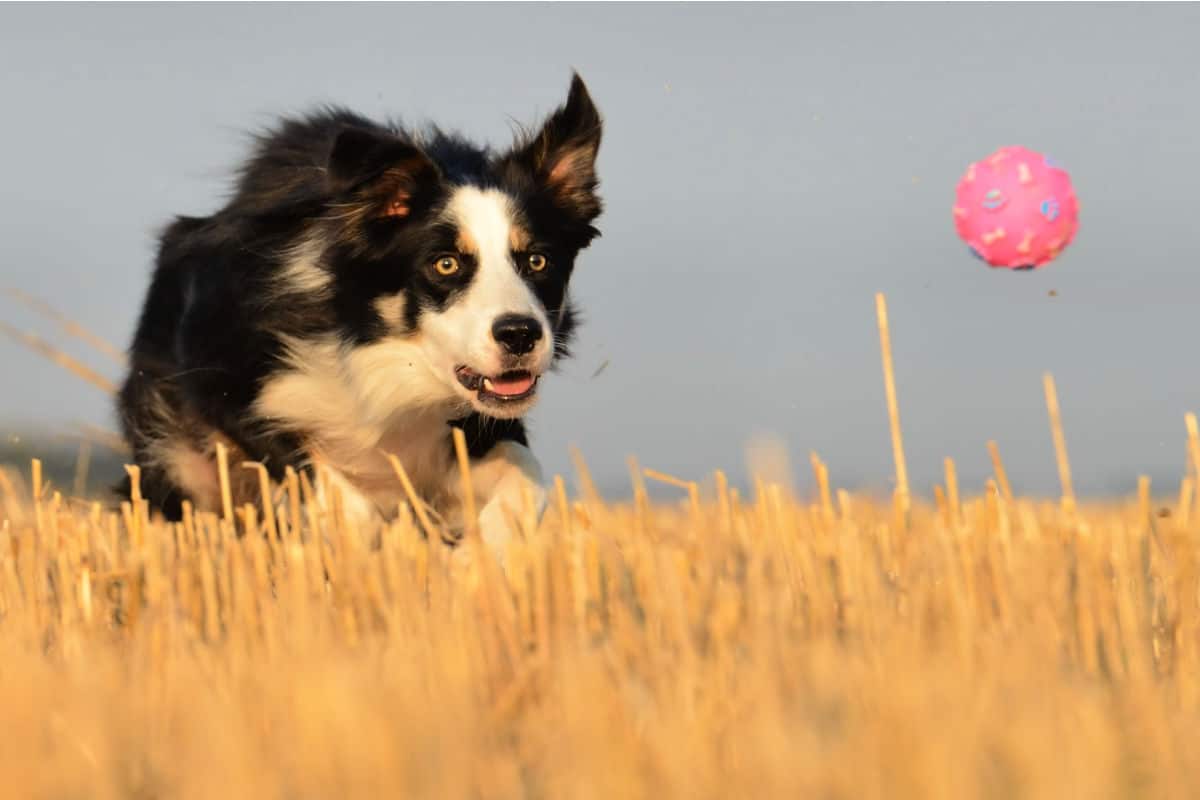With their affectionate, playful and gentle personalities, shelties make great family dogs. These sheepdogs get along with everyone, but they can be shy and reserved when a stranger stops to cuddle them.
Despite being such a wonderful breed, it’s important to know what you’re getting into if you bring a sheltie into your home. One of the things that surprises many new sheltie owners is just how much shelties shed.
Shetland sheepdogs, or shelties, are a heavy shedding breed. They have two layers of fur, which gives them a double coat. They lose hair throughout the year but usually shed their full undercoats every spring and fall, depending on their gender and if they’re sterilized.
Why do shelties lose so much hair?

There are a few reasons why shelties lose so much hair.
Shelties have something called a double coat, which simply means there’s a topcoat and an undercoat.
The topcoat hair is straight, long and water-resistant. It keeps the dog warm and protects the skin from the elements, such as the sun, wind and rain. The short fluffy undercoat helps the dog maintain the right body temperature, staying warm in winter and cool in summer.
Because shelties have two layers in their coat, they have twice as much hair to lose than dogs with a single coat. But Shelties’ long hair means they shed in clumps, which can be brushed or gently pulled out. Short-hair, single coat dogs lose single fine hairs when they shed, not clumps.
Sheltie owners say that shedded hair tends to stay on the dog in these clumps or is found lying around like tumbleweed. Regular brushing and grooming prevents the sheltie from getting knots and matted hair.
Lastly, all dogs go through three steps with their hair: a growth phase, a rest phase, and a shed phase. These three phases repeat themselves throughout a dog’s adult life. Shelties are no different and follow the same shed cycle to keep their coats in good condition.
Click here to find out if your Sheltie carries the merle or double merle gene.
When do shelties shed?
There are a few things that cause shelties to shed and that can affect how much they shed. Some of these influences are in your control and others aren’t.
First is the sheltie’s age. A sheltie’s coat grows and develops over the years. The short fluffy undercoat grows first, followed by the thicker, coarser, longer topcoat. The dogs don’t shed much or at all until after they are at least a year old.
Shelties’ coats keep changing, growing and developing until they are between three and five years old.
The second factor that affects shedding is the time of year.
Shelties lose hair all year round but have full sheds at least once or twice a year, when it’s getting warmer and when it’s getting cooler outside. This is usually in spring and early fall, so expect to increase grooming and vacuuming in April or May and August or September.
These full sheds are called ‘blows’ or ‘blowouts’. During a blow, the sheltie loses their undercoat to make room for a fresh new one that’s healthy and strong.
The third factor that influences shedding is hormones.
Hormones do play a role in how often shelties have blows. Males tend to shed less than female shelties overall. Sterilized shelties often have one blow a year, in spring, but sterilized males may only have a full shed once every two years.
If females are unspayed, they shed before the hot summer starts and every 6 to 8 months after their heat cycle.
How long does a sheltie shed last?
Being heavy shedders, shelties shed heavily once or twice a year in a blow and moderately throughout the rest of the year.
Sheltie owners report that most full blows, where the undercoat is shed and replaced with a new one, last about one month.
During a blow, groomers often offer owners a ‘deshedding’ service with a tool like a FURminator. But this is unnatural for the dog and can damage the sheltie’s coat and strip the undercoat. For this reason, deshedding at a groomer or using tools like FURminators are not recommended to speed up the shedding process.
Tips to control sheltie shedding
Here are some top tips from sheltie owners and groomers on how to control sheltie shedding and blows:
1. Brush your sheltie often with the right brush
Because of their double coat and constant shedding, shelties need to be brushed regularly. If you neglect this, their hair will get knotted and matted. These knots are painful to remove and ungroomed fur can give the dog skin problems.
It’s recommended that you brush a sheltie at least once a week. This should take about half an hour (30 minutes) and is a wonderful time to bond with your dog.
You will need to invest in a high-quality brush if you bring a sheltie home to live with you. Every dog is different and what works for one dog won’t work for another.
Sheltie owners recommend using one of three brushes:
-> Many sheltie owners say that the Chris Christensen pin brush is best for shelties. This brush has nubs or covers at the end of its pins and should last for years.
To clean the brush during and after brushing, take a wide-tooth comb and thread the comb’s teeth through the brush’s bristles. This should be done along the base of the brush, under the hair.
Once you’ve placed the comb under the hair between the brush bristles, pull up the comb to remove all the dog hair from the brush in one simple movement.
-> Other owners prefer a dog brush without nubs at the end of its pins, such as the All Systems brush on Amazon. Fans of ‘nubless’ brushes say that nubs hook on and pull out more dog hair than necessary.
If you use a brush without nubs, simply use your fingers to pull out the hair and clean the brush.
-> Some sheltie owners like using a professional cat comb to groom their sheltie. If you want to give this a try, look for a cat comb with very wide and thicker teeth that have rounded tips.
No matter which brush works best for your sheltie, it’s good practice to trim the hair around their private parts for hygienic reasons.
2. Control the amount of hair in the house
The good news is that you probably won’t need a lint brush with a sheltie.
Why?
Because of their long fur, a sheltie’s shedding can be easier to handle and stay on top of than a dog with short hair and/or a single coat. Shelties tend to lose their hair in bunches that often get stuck in their own fur. So regularly brushing and gently pulling out the hairballs will leave less hair lying around the house.
If the hairballs do get on the floor, they’re easy to vacuum or pick up. This is unlike short-hair or single-coat dogs, whose single hairs often weave their way into clothing, furniture and carpets. Once these hairs have taken hold in these materials, it takes careful picking one by one to get them out.
If there’s sheltie fur on your clothes or furniture, simply wet your hand or dampen a cloth and run it over the material. This should easily pick up and remove the dog hair.
3. Feed your sheltie good quality food
A great coat starts with great nutrition. Be sure to feed your sheltie high-quality dog food.
Giving your sheltie the right nutrients will keep them healthy and give them a strong, shiny coat that helps keep shedding to a minimum.
4. Get your sheltie sterilized
A sterilized sheltie has full sheds, or blows, less often than an unsterilized or unspayed sheltie. This does depend on the dog as each one is different.
Sterilizing a female sheltie could reduce her blows from twice a year to once a year. Sterilizing a male sheltie could bring his blows down to once every two years.






